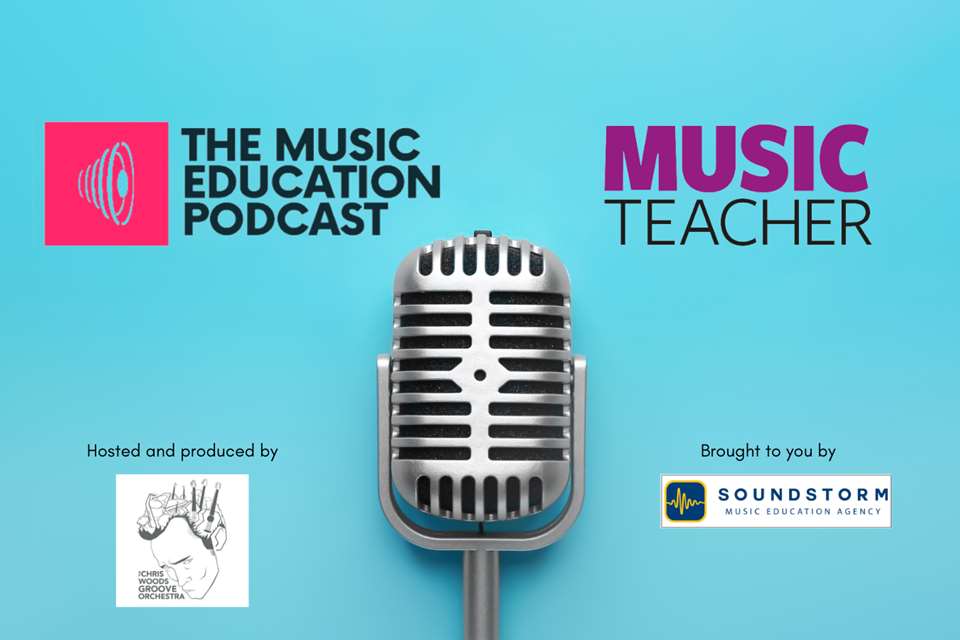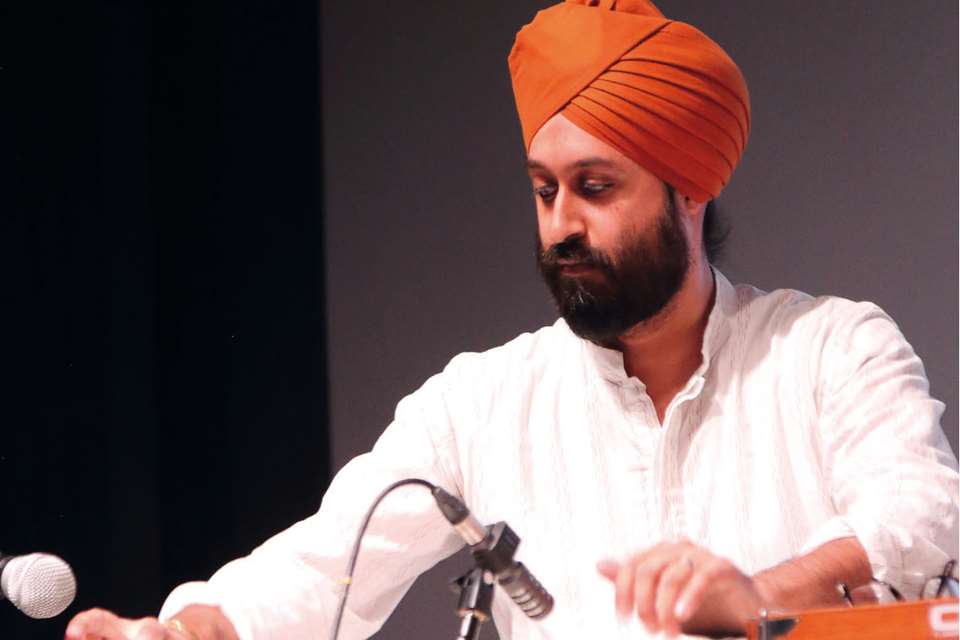Press refresh: Taking a new approach to keyboards in the music classroom
Chris Woods
Tuesday, November 1, 2022
Is it time to move away from conventional approaches to keyboard and piano in school? Chris Woods of The Chris Woods Groove Orchestra and The Music Education Podcast offers a fresh perspective on a familiar favourite.

Courtesy Arthr
Only music teachers truly understand the emotional turmoil that a demo button from a Casio keyboard can cause; the classroom chaos that can ensue from a student who works out how to play ‘the melody’ exclusively using animal noises. We grit our teeth and try to bring the focus back. I believe these seeming acts of defiance and protest, however, should not be ignored or redirected. I think these actions are a cry for help, a cry for sonic freedom. There is a sound world out there, which students experience every day, and they are hungry to reach it.
With a new perspective, I believe we can refresh the keyboard in the classroom and set students free in an exciting sonic world. In this article I will be examining how our perspective of the piano can stifle creativity. I will look at how, by recognising the piano's limitations and influence, we can inspire more students to access keyboard instruments and craft their own unique sound. You can listen to the accompanying podcast episode where I chat in depth with the truly modern artist ‘Arthr’ about synthesisers, keyboards and even the world of NFTs.
The piano on the pedestal
In the Western world, the acoustic piano is held in high esteem. The ‘great’ Western classical composers are so often commanders of the keys. Our entire musical language consistently references the piano. Traditional notation itself mirrors it. After expressing a desire to compose as a student, I remember clearly being told how essential keyboard skills were as ‘even Lennon and McCartney’ knew how to play piano. The guitar I loved was viewed as a mere toy in comparison. The ‘importance of keyboard skills’ are also still very present at university, where you might expect a more progressive perspective. A quick look at the entry requirements for the Oxford University BA Music, which covers all music, reveals a recommended Grade 5 keyboard ability. Nothing says piano is ‘essential to music’ like it being a requirement to study music itself.
Crucially, though, that piano on the pedestal is a very specific instrument. The electric synthesiser or cutting-edge keyboard that creates soundscapes with the touch of one key is often cast aside for renegades and pop acts – it is the acoustic piano you see up there; the upright to the grand and everything in between.

NFT of a Moog, created by Arthr © COURTESY ARTHR
Sonic worlds
Arthr is a game changing audio and visual artist – a musician who has a love for synths and keyboards and is truly at the cutting edge. He's as comfortable with performing in a concert hall as he is in the metaverse. I interviewed him for this article and the accompanying podcast. He refers to his synths and keyboards as ‘machines’. The physical ‘keyboard’ is the interface to the machine. The mechanism within the instrument, be it an electronic piano/synthesiser or an acoustic piano, is mechanical and generates a sound according to what you ‘input’ via that ‘keyboard’ interface. There are some significant differences between our ‘acoustic piano machines’ (which we hold in such high regard), the electronic synthesiser, and the humble electronic keyboard machines (that one with the demo button and the animal noises).
While the sound of the acoustic piano ‘machine’ is a recognisable one, it is limited to one sound world. It is a sound world that your students are not by default inspired by. Synthesisers and electronic keyboards, on the other hand, are completely the opposite. They have boundless possibilities and, by default, will include a sound that means something to your students. The sheer number of sonic choices alone will mean something is familiar or exciting. With such an overwhelming amount of modern music driven by electronic synths or keyboards, it's an easy win for the classroom if you let them explore.
Arthr not only uses synthesisers to create his music, but as an audio-visual artist, his most recent NFT's have been based around particular synthesisers or ‘machines’ from particular times in musical history. He created these for a simple reason. In his words: ‘Some of those machines define the sound of an era.’ The reality is that the synthesiser is probably more ‘sonically’ relevant than an acoustic piano to anyone under the age of 70.
Unchartered territory
Of course, it's not just the sonic relevance of the ‘keyboard machines’ that is important to recognise as educators. It is also the access to new and exciting sound worlds that a keyboard creates. Using a synthesiser or electronic keyboard with access to all the different parameters is a ‘playground’ – a limitless world of creativity that doesn't require technical skill or knowledge to get going. Being creative with a synthesiser or electronic keyboard does not necessitate ‘keyboard skills’, and the number of opportunities to create a unique sound far exceed that of an acoustic piano. On a synthesiser, by playing one note I can create something harmonically and rhythmically exciting instantly. There might be infinite harmonic possibilities on the acoustic piano, but the opportunity to discover new and unique sounds is limited and restrictive – particularly by physical technique.
Arthr casually compared using a synthesiser as opposed to an acoustic piano, and the profound affect it can have in the early stages of learning: ‘If you play a middle C and all this extra stuff happens, from all these extra buttons, that opens people up, doesn't it? It brings you outside of the traditional way of reading and interpreting music. It adds that next level to it. If I had had that exposure as a young kid, things would have been a lot different.’ The final sentence reflects wonderfully how experiencing this freedom is a game changer. So why is ‘O Acoustic Grand’ so often the default setting for classroom keyboards?
Theoretical foundation
It's important to understand that music theory, in its Western traditional sense, has the keyboard or piano at its foundation. However, using C major as the starting point for theoretical ideas is responsible for some deeply rooted misunderstanding among students and teachers alike, particularly around sharps, flats and even minor and major. The teaching of modes from a piano perspective as different degrees of the C major scale, for example, can also be completely misleading and notoriously difficult to decode into other keys. Being keyboard centric for music theory clearly has its downsides for explaining theoretical ideas.
This theoretical approach is of course linked to the ‘acoustic piano’ – synthesisers or electronic keyboards operate on a very different plane. They offer a unique perspective on music and sound itself. In the quote above, Arthr described ‘all these extra buttons’. These buttons are things that affect and change the sound: oscillators, modulation wheels, filters, and so much more. These are parameters that aren't really articulated in notation or discussed in traditional understanding of music theory. The synthesiser or electronic keyboard not only transcends sound worlds and technical boundaries, but it also transcends the accepted parameters of musical possibility.
Throw off the shackles
As educators, we are all aware of the need to equip students with skills for a time in the future rather than the past. For music teachers, I feel this is an easy win – simply enabling students to create and discover freely. We help facilitate something new that we might not be able to fathom. However, so much of our own understanding or conditioning can play a part in limiting and even damaging students’ potential to create that something new. By simply recognising the limitations of the traditional acoustic piano and the theoretical ideas around it, we can liberate students and ourselves from creative limitation.
Every classroom and every educator will have their own challenges in accessing what we might traditionally understand as a ‘synthesiser’. However, by simply approaching the ‘keyboard’ as an interface attached to a machine, and welcoming discovery and exploration outside of the acoustic piano sound, we allow students to discover new worlds we couldn't ever have imagined.
Listen to this article's accompanying episode of The Music Education Podcast, hosted by Chris Woods and brought to you by Soundstorm:
Music Teacher is media partner of The Music Education Podcast.





